|
The National Association for Music Education (NAfME) points out that there is still no one comprehensive training program for music teachers on the best methods of teaching to students with disabilities and other special needs. Special education teachers may also be concerned about finding the most appropriate and memorable ways of bringing music into their classrooms. With that in mind, here are a few notes on using music to expand the classroom experience for students with special needs: 1. Extraordinary benefitsMusic holds an immense untapped potential to transform the lives of young people with special cognitive and emotional needs. It can build motor skills, social skills, and the ability to communicate with others. Using music as a tool can enrich the life of a child with special needs by making him or her more self-aware, more aware of the world, and better able to understand the people in it. It can serve as an easily accessible bridge from a child’s own inner world to the worlds of others. Music therapists point out that setting lessons—in any subject—to music makes the material easier for students to process and retain. Music can serve as a motivational tool and a way of keeping track of time. Teachers may find that where other strategies have failed, music may be the key to facilitating communication with students with special needs, particularly those who are non-verbal. Children with special intellectual or developmental needs sometimes show a gift for music. And, even for students with special needs who don’t show an obvious aptitude for making music, the very presence of music in the classroom can help overall educational progress. 2. A total neurological packageAll areas of the human brain, as well as almost all of the human sense organs, receive stimulation from making or listening to music. This translates into music’s capacity to boost cognitive capacities in significant ways. Because music engages multiple senses at once, it has an instant and powerful effect on both hemispheres of the brain, as well as the entire human nervous system. Finnish investigators have discovered that simply hearing music stimulates broad swaths of neuro networks, including those that govern the creative process and coordinated movement. While playing music of any kind, many parts of the brain receive stimulation: the cerebellum, a range of cortexes involved with sensation and movement, the prefrontal region, and the limbic system and its amygdala, which are responsible for responding to and remembering emotions. 3. Enhancing the musical experienceThere are a number of resources that can even create customized music for special needs students, assisting them in distinguishing the sounds of spoken language or serving as aids to memorization and learning. 4. The power of percussionPercussion instruments can be especially meaningful for students with special needs. Drums, shakers, and similar instruments provide an immediate sound in response to a physical activity, which can help sight-impaired students improve their ability to control their own movements and understand the nature of cause and effect. The ability to touch and feel the shapes and physical textures of a variety of instruments is also beneficial, as is being able to feel the sound vibrations that follow a particular action. 5. A sample rhythm programNAfME’s website offers some tips on how to build a structured approach to teaching the simple concept of rhythm to students with special needs: First, start off by, as a group, clapping students’ names. Because our names are so intimately familiar to us, it is an easy way for those with special needs to connect to a beat and a pattern. This type of exercise is doubly valuable in that it reinforces the memorization of classmates’ names as well. The next step includes using common words and phrases in rhythmic clapping. Words can be topical—tied in with an approaching holiday, for example—or can represent everyday things in students’ worlds. Displaying an image of the word or words is additionally helpful for any students who still may struggle with word recognition. At this point, teachers can put background music into the mix to support classroom rhythm games. At the next level, teachers can incorporate the use of color to teach musical notation. Each type of note value can have its own color; for example, blue can indicate a whole note, green a half note, and so on. A posted picture of a word that represents the musical expression, with the color-coded notes beneath it, can provide extra support as students learn to rely only on the notation. As students become more comfortable with this phase in their learning, the teacher can gradually eliminate the pictures and the color-coding, encouraging students to read the original musical notation without any prompts. 6. Pairing music with visual stimulationVisual cues are also very helpful for students with special needs learning to remember song lyrics. By fixing images of the words they are singing above the lyrics, teachers can support students in their processing and recall of the new information. Often, adding movement to the singing of lyrics can serve as an additional mnemonic. 7. Giving music its due in education plansTeachers of children with special needs should ensure that each student’s individualized education plan includes a place for music instruction—and for the joys of creative self-expression that come along with it.
The universality of music as an art form—and as a cultural treasure—has become a cliche. However, as music teachers know, that cliche represents an important truth about the way in which music can expand horizons, facilitate understanding, and contribute to a broader appreciation of the heritages of all the people in the world. Children who learn that there are others much like themselves who make music, dance, and sing together just as they do, can be a powerful motivator for them to learn more about other cultures. And when they participate in positive programs that introduce them to cultures other than their own, they learn to become more tolerant and accepting of other human beings. In addition, participation in multicultural musical activities exposes children to a wider variety of sounds, intonations, and rhythms than they would ordinarily experience at home. Educators point out that the process of teaching children music from a rich variety of cultures should begin in early childhood with an emphasis on broad participation. And any good early childhood music program will typically incorporate rhythmic movement activities and opportunities to develop social skills. Studies validate multicultural music experiences.Research has shown that when children hear music from other cultures, they develop the ability to perceive fine distinctions among sounds. This is just the type of experience that helps them to acquire and build on vital early language skills. They also learn the art of listening and increasing their ability to concentrate. Experts assure anxious parents that hearing music in multiple languages—just as in the case of learning a second language—actually helps young children to improve their primary language skills. World Music Day honors many traditions.In fact, there is an entire day dedicated to the celebration of listening to, performing, and enjoying music from all over the world. World Music Day, which is observed in a multitude of ways in numerous countries, occurs on June 21 of each year. The observance began in France, as Fête de la Musique, in the early 1980s. Since then, it has served as a means of promoting free access to music for everyone in some 700 cities worldwide, and it is supported by organizations such as Musicians Without Borders. A treasure trove of recorded music.Teachers and parents who want to focus on offering a multicultural palette of musical experiences can begin with one of the many well-reviewed recordings for children. These include the series published by Putumayo, which provides high-quality CDs of representative musical compositions from a wide range of cultures for children of all ages. Putumayo’s children’s catalog, which is available online, includes the classroom favorite and Parents’ Choice award-winner World Playground. The label’s other selections include Kids’ African Party, which also offers an aid to learning with a list of instruments and musical genres that are distinctly African. Other Putumayo titles include Cuban Playground, Italian Playground, and other “Playground” CDs featuring musical styles from New Orleans, Brazil, France, and the Caribbean. The albums are joined by several “Dreamland” collections, featuring multicultural songs suitable for quiet family times. A classic American performer interprets the music of the world.Ella Jenkins is a performer beloved by generations of parents and children. Jenkins, an African-American singer and actress, has worked since the 1950s to deliver definitive renditions of a wide range of folk songs for audiences of children. Her albums are available on the Smithsonian Folkways label. Jenkins’ classic Smithsonian Folkways albums include Multi-Cultural Children’s Songs and More Multicultural Children’s Songs. Children can enjoy songs from these albums that teach common greetings in many languages, including Swahili. Other tracks include renditions of beloved songs depicting the cultures of Israel, China, Australia, Germany, and many other nations. Smithsonian also publishes Jenkins’ early albums Call and Response: Rhythmic Group Singing, which introduces listeners to West African music, and Adventures in Rhythm, which teaches awareness of rhythmic concepts in music from the very basic to the more complex. A bilingual educator offers multiple ways to learn music.José-Luis Orozco is another musical artist with an international catalog that spans decades. A teacher with a master’s degree in education, Orozco has made a career of sharing the joys of music in Spanish and English with children and their families. He performs throughout the Americas to promote the value of bilingualism and multicultural understanding. Orozco’s albums include Caramba Kids, De Colores, Esta es mi tierra/This Land Is Your Land, and numerous others. His website also offers educational kits that can enhance classroom music and cultural programming. Putting traditional American classics in a global frame.Another Smithsonian Folkways artist, Elizabeth Mitchell, offers recordings anchored in her early work as a teacher of young children in New York City. Her classes consisted of children who spoke a wide range of languages. Mitchell discovered that music could serve as a bridge among cultures. She has since gone on to immerse herself in the American and world folk music traditions. Her highly accessible albums include You Are My Little Bird, which features interpretations of American Appalachian and other folk melodies appropriate for all ages.
When parents and teachers first think about fiction titles for children on the subject of music, the ones that first come to mind are likely to be picture books. But there are also a wide range of absorbing novels for middle-grade readers, each bringing the world of creating and performing music to life. Here are only a few: 1. The Trumpet of the Swan by E. B. White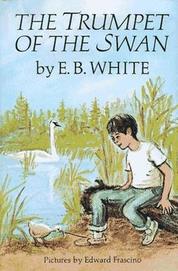 White is better known as the author of Charlotte’s Web and Stuart Little. However, The Trumpet of the Swan is a worthy addition to a young reader’s bookshelf in its own right. The novel’s protagonist is Louis, a young trumpeter swan that the author named after legendary jazz trumpeter Louis Armstrong. Louis is broken-hearted because he cannot make a sound. He wants to be able to communicate with Serena, a beautiful swan who has won his heart. When Louis learns to read and write, aided by his friend Sam Beaver, he only confuses his swan friends. But when Louis’ father steals a trumpet for him to play, the young swan shows that he is more than a voice. In this, his final book for children, White conveys the joy of music and the equal joyfulness of self-expression. Director Richard Rich created a 2001 animated film adaptation of White’s 1970 masterpiece. 2. Bud, Not Buddy by Christopher Paul CurtisThis Newbery Award-winning title also earned a Coretta Scott King Award for its vivid portrayal of the title character, an African-American boy living during the Great Depression. The 10-year-old Bud, whose mother died when he was only six, sets out on a train to find his missing father, as well as to track down the famous jazz musician Herman Calloway. As he learns about his family’s history, Bud also falls deeply in love with the rhythms of jazz. Curtis’ 1999 book was later turned into a jazz-flavored musical that has delighted young people all over the country in touring performances. 3. Hidden Voices by Pat Lowery Collins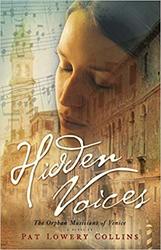 This 2009 historical fiction title for mature young people ages 12 and up is subtitled The Orphan Musicians of Venice. It is the story of three teenage girls who live in an orphanage in the early 18th century. However, this particular orphanage has built up an extraordinary program of music education, and that theme pervades the book. The three girls all begin their lives searching for love. They find it in their growing devotion to the musical arts under the tutelage of composer Antonio Vivaldi. But there is danger outside the orphanage walls. Each of the main characters experiences the complexities of life, love, and personal trauma in different ways. The book is a rich depiction of the capacity of rigorous musical study to strengthen the human spirit. 4. Second Fiddle by Rosanne ParryParry’s exciting, sensitive 2012 book is a look at the adventures of Jody, a 13-year-old girl in Berlin in 1990 in the wake of the fall of Communist governments across Eastern Europe and the destruction of the Berlin Wall. Jody, a violinist, lives with her family on an American army base. She and her two best friends are the members of an ensemble string trio who hope to perform in a competition in Paris. But their plans are derailed when they are the only ones who can rescue a young Russian soldier who becomes the object of attempted murder. As the girls try to save the young man by helping him reach Paris, they become embroiled in political intrigue and learn the strengthening and revitalizing power of the art they have chosen. 5. Echo by Pam Munoz Ryan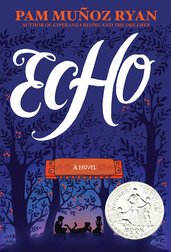 The harmonica is the star of this well-researched and deeply moving novel about musical vocation, identity, courage, and compassion. Ryan follows the story of a particular harmonica through the lives of multiple children at multiple times and places. Their musical stories touch on the tragedies of the Holocaust, the internment of Japanese-Americans in World War II, the prejudices against Mexican migrant laborers in mid-20th century California, and the harsh lives of children in an orphanage. Ryan received a 2016 Newbery Honor Award for the book. The audiobook version of Ryan’s beautifully-written historical and contemporary fable is made richer with accompanying musical performances. 6. I Am Drums by Mike GrossoIn Grosso’s 2016 book, middle school student Sam not only plays the drums, she lives the drums, hearing the beat even in her sleep. Unfortunately, her parents don’t have the money to support her dreams by buying her a drum set of her own. Additionally, her school loses its music program due to budget cuts.
Sam creates a drum kit out of old magazines and books while coping with her father’s job loss and her parents’ constant arguing and lack of understanding of her passion. Her love of music prompts Sam to test the limits of what she is prepared to do to achieve her goals. She even lies to her family about starting a lawn-mowing venture to earn money. The author, a music teacher himself, creates a story based on the real dilemmas many kids like Sam face. He establishes reader empathy for his central character, her missteps and successes, and her dream to be a musician. At the center of today’s symphony orchestra is the string section. The family group of stringed instruments includes the violin, the viola, the cello, and the double bass. This group’s defining features are strings, frets, and bows. The word “violin” is actually a diminutive term for “viola,” meaning that the instrument descends from the older viol family. The original Italian term for the latter instrument is “viola da braccio,” or “viol for the arm.” Held against the musician’s shoulder, this is the type of viol from which the modern viola developed. The following are some interesting facts about the always lyrical, expressive, and resonant violin: 1. It came into being during the Middle Ages.Some experts believe that the introduction of the violin into Europe began with the stringed instruments of Arab-ruled Spain in the early Middle Ages. The instruments of the cultures of the Iberian Peninsula at the time included the rabab and its descendant, the rebec. The latter had three strings, was shaped like a pear, and was often played with its base resting against a seated player’s thigh. Musicologists consider Central Asia the most likely ultimate origin for the bowed chordophone instruments that began to proliferate throughout Europe and Western Asia by the early Middle Ages. The Polish fiddle may be one of the direct progenitors of the violin. In addition to the rebec, other medieval instruments that led to the development of the violin included the lira da braccio and the fiddle. The shape of the lira da braccio, in particular, with its arching body and low-relief ribs, prefigured today’s familiar violin. The lira da braccio’s shallowness of body likely led to the addition of a sound post, a device particular to the violin and later to the viols. The sound post is a small, vertically positioned dividing wall that separates the instrument’s front and back in order to keep the pressures exerted on the strings from causing the belly arch to cave in. Musicologists point out that this sound post contributes to the richness of the violin’s lilting, singing tone, as it harmonizes the workings of the body and strings as a unit. By the end of the medieval period, a fiddle of a type that would be recognizable today appeared on the scene. 2. The Amati family refined the violin during the Renaissance.According to paintings of the time, violins with three strings were being played by at least the early 16th century. Lute-maker Andrea Amati of Cremona in Italy produced several violins with three strings at about this time. At about the middle of the 1500s, violins with top E-strings had appeared. It was then that the cello—or “violoncello”—and viola also branched out of the viol family. Bowed instruments developed further in tandem with the Renaissance, particularly in Italy, with the Amati family being the most famous violin-makers of the 16th and early 17th centuries. The Amatis’ great innovation was the development of the thinner, flatter, violin body that produced a particularly appealing sound in the soprano register. 3. Stradivari established impeccable standards.While the Amatis played a major role in standardizing the general size and proportions of the stringed instruments we know today, one of their apprentices, Antonio Stradivari, would carry forward and expand on their technical skills. By the late 1600s, Stradivari had created a wholesale alteration in violin proportions through elongating the instrument. His now-standard form for its bridge and general proportions has rendered it capable of producing sounds of extraordinary power and range. At one time, it was believed that Stradivari’s violins drew their range and depth of tone from the secret formula he used for their varnish. No one, then or now, has ever figured out that formula. Today’s music historians note that the distinct sound of Stradivari’s violins most likely derived from the quality of the vibration facilitated by thicker wooden top and rear plates, as well as from the configuration of miniscule pores in the wood. However, many experts additionally point out that the master’s varnish did indeed contribute to the overall quality of the sound. 4. Virtuosity became the goal for violinists in the 19th century.Into the 1800s, violin-makers continued to try new ways to construct the instrument and refine its proportions, angles, and arches. At this time, the repertoire for solo and accompanied violin began to require high levels of skill and dexterity, and violinists such as Niccolò Paganini became known for executing tremendously complex passages. Paganini, who cultivated the image of the composer-musician as a wild Romantic, amassed an enormous and devoted fan following in his day. Such virtuosity was further enhanced when Louis Spohr invented the chin rest sometime around 1820, thus enabling a player to more comfortably hold and manipulate the instrument. The addition of a shoulder rest additionally contributed to this ease of handling. 5. There are many modern-day virtuosos.A number of 20th- and 21st-century players have rivaled Paganini in skill and popularity. Among these are the child prodigy and older grandmaster Yehudi Menuhin, who died in 1999 at age 82. Menuhin’s technical proficiency dazzled audiences, and he became known for his championing of contemporary composers such Béla Bartók. Itzhak Perlman, born in 1945, remains one of the world’s finest living violinists, known for his focus on detail. While still in his teens, Perlman made his debut at Carnegie Hall. A Grammy Award winner for lifetime achievement, he has since played with jazz and klezmer groups, and performed music for motion pictures. In addition to his work as a conductor, he has also served as a teacher of gifted young musicians. 6.Today, the violin encompasses a mosaic of musical cultures.Like Perlman, today’s violinists perform not only classical music, but also an entire world of country, bluegrass, folk, rock, and world music. Throughout North Africa, Greece, the Arab world, and the southern part of India, the violin and viola continue to be very popular. The Roma have a long tradition of using the violin in communal music-making, as do the Jews through the tradition of klezmer. The violin remains widely used in American and European folk compositions as well.
The lilting, lyrical tones of the flute make it one of the most popular instruments for young musicians and one of the easiest to recognize in an orchestra. Experts recommend that you begin to teach the flute and other woodwinds when your child is old enough to have developed adequate lung capacity—typically by ages 7 or 8—and the dexterity to hold and manage an instrument correctly. The flute, which is also one of the oldest-known instruments, has a fascinating history, as it has developed over time: 1. Ancient OriginsThe flute, which is the first-known wind instrument, was used by Stone Age people. Flutes have been fashioned from animal bone, wood, metal, and other materials. The oldest-known example of a Western-style, end-vibrated flute dates back at least 35,000 years ago. Unearthed near the town of Ulm in Germany, the flute was made from the bone of a griffin vulture. Early flutes tended to be end-blown, played in the same vertical position as the recorder is today. Later evolutions resulted in the side-blown—or transverse—flute attaining the form we now know today. Ancient Sumerians and Egyptians used flutes fashioned from bamboo, eventually adding three and four finger holes that increased the number of individual notes they could play. Ancient Greek flutes were end-blown and had six finger holes. The Romans are known to have played transverse flutes, which may have been introduced to Western Europe by the Etruscans as early as the 4th century BCE. The ultimate source of the transverse flute was likely Asia, reintroduced to early medieval Western Europe via the Byzantine Empire. 2. Medieval and Renaissance Pipes, Fifes, and FlutesMedieval flutes, which were typically wooden, with six open finger holes and no keys, were often paired with a drum as the minstrels’ portable pipe-and-tabor set. The Renaissance witnessed the development of flutes, often made from boxwood, with two groupings of finger holes and a slimmer cylindrical bore. While this new design made the tone lighter and more airy and delicate, the sound from the lower register became more problematic. Military bands continued to use the smaller fife. 3. The Flute Replaces the RecorderThe transverse flute began to displace the recorder in the middle of the 17th century, and before another century had passed, it had moved into a place of popularity among a wide range of composers. During this period, changes in the flute’s size and shape conferred upon it a greater musical range. Its larger chromatic range made it capable of evoking a rich palette of moods, from the pastoral to the sprightly, to dramatic declarations of love and soaring flights of fantasy. In the Baroque period, French musical instrument makers—the Hotteterre family chief among them—introduced major changes. They included the creation of three joints for the instrument, increasing to four joints by the early 18th century. The Baroque flutes also featured a bore that tapered toward the foot end. The alterations permitted cross-fingering in order to play in various keys. They additionally made upper-register volume and tuning better. New sliding joints permitted the flute to be tuned in tandem with other instruments of an ensemble. The designation “flute” in compositions from the Baroque period typically continued to mean the recorder, with the transverse flute becoming commonly known as the “German” flute. 4. A Classical FlourishingBy the early 1800s, the flute had six keys and would soon add two more. These classical flutes, like their earlier Western European counterparts, were usually made of wood with a cone-shaped shaft and six keys. The flute as we know it today took its modern form at the time of the Classical period in music, the era of Haydn, Mozart, and Beethoven. During this time, the flute became an integral part of the symphony orchestra. 5. Baroque and Classical Music for FluteIn 1681, Jean-Baptiste Lully became the first to write the transverse flute into an operatic orchestra. Over the Baroque and Classical periods, a number of composers created compositions showcasing the capabilities of the flute. Early 18th century composer Georg Philipp Telemann’s Twelve Fantasias for flute without bass presents flutists with passacaglias and fugues that demonstrate the many possibilities of the instrument, including the “false polyphony” resulting from rapid changes in tone and subject, with the high and low registers alternating. Mozart wrote his Flute Concerto in G major, No. 1, K. 313, which contains a liltingly expressive Adagio movement, encased by lively Allegro and Rondo movements. Beethoven composed numerous works for the flute. His Serenade in D major, Op. 41, is composed for flute accompanied by piano. The work is a series of six subsections, by turns serene and vivacious, introduced by an overture. Its Andante con variazioni e coda has earned praise from musicians as a supreme example of the composer’s art. 6. Boehm’s Lyrical RevolutionToday, flutists use the term “Western concert flute” to describe modern flutes descended from Western European models. This style of flute is also known as the “C” flute because it is usually tuned to that note on the scale, or as the “Boehm flute,” due to the influence of Theobald Boehm on its evolving design. The German-born Boehm, whose long career spanned most of the 19th century, was the greatest influencer of the way the modern flute looks and sounds. A flutist himself, as well as a goldsmith and artisan, Boehm produced a series of significant innovations in the design of the instrument beginning in 1810. Building on previous ideas of other instrument-makers, Boehm also adopted the idea of using larger tone holes, as well as the use of ring keys. In his iterations of the flute in the 1830s, Boehm provided tone holes organized to create the best possible acoustic values. He also linked the keys through a series of movable axles. He also adapted newly invented pin springs to his instrument and put felt pads on its key cups in order to impede the unnecessary escape of air. He altered the silhouette of the embouchure—the mouth hole—to make it rectangular, and constructed the instrument of German silver, for its superior acoustic qualities. By the close of the 1870s, Boehm was offering his “modern silver flute.” Over the course of his career, he produced a revolution in the way flutes were designed, constructed, and standardized. His basic flute design remains largely in use today. The Library of Congress holds a number of examples of Boehm’s flutes in its Dayton C. Miller collection. 7. Today’s Flute—An Ancient Instrument with a New VoiceModern flutes typically have 16 keyed openings, corresponding to an even-tempered octave. Many contemporary flutes possess a range of three octaves. Today’s flutes are typically made from blackwood or cocuswood, or from silver or a silver and nickel-silver alternative.
Current members of the flute family include the piccolo, the concert and bass (or contrabass) flute, all in the key of C, in increasingly lower registers and with different ranges. The lowest note on the hyperbass flute has a frequency of only about 16 hertz, considered lower than the lower limit of human hearing. Flutists today have a rich repertoire of solo and ensemble pieces to choose from, including works by earlier composers such as Carl Philipp Emanuel Bach, a well as 20th century masters such as Claude Debussy, Maurice Ravel, and many others. Pythagoras might have been speaking for numerous others when he said that he found music in the spacings between the planets and geometry in the sounds of strings. Plato wrote of harmonies in mathematics and how they parallel harmony in a just society. Confucius also found numerous eternal truths in the unfolding of pieces of music. These ancient philosophers grasped truths about the interconnectedness of music and mathematics that have become even more clear over the centuries. Here are only a few insights, based on the experiences of musicians and mathematicians, about this close relationship: 1. Activation of analogous skillsMusic students, when tested, tend to show more skill in mathematics than their non-musical peers. High levels of cognitive processing ability and executive function—which involves self-regulation and self-management in order to achieve a goal—are essential for success in both fields. Research also supports the notion that executive function, even more so than overall intelligence, has been shown to influence academic achievement. Learning math ties into the development of executive function by calling on a child to analyze, identify key concepts, and proceed through a series of logical steps. Likewise, learning to play a musical instrument enhances this capacity by, among other factors, drawing on the ability to calibrate motor movements in response to changes of time signature and key. 2. A beautiful symmetrySome mathematicians explain their field by focusing on how they work to extract the essential elements of any given thing and study the characteristics and interactions of those elements on an abstract plane. This type of learning can help students to understand music and can lead to a deeper engagement with the essential elements of a musical composition. Music can inspire students to learn more about mathematics through studying, for example, the properties and manifestations of sound. Innovative mathematics teachers have even brought opera singers into their classrooms to show students how the patterns of mathematics are part of the essence of music. 3. Simplicity within complexityEvery note a composer writes or a musician plays is involved in an intricate web of harmony, rhythm, and mathematical patterns. These patterns tend to be built around elements of symmetry. For example, just as the shapes of regular geometric figures remain the same when rotated, a musical tune can be transposed to another key in a composition such as a fugue. In a Mandelbrot set, a famous fractal, a smaller replica of the entire patterned set can always be found hidden at the core of any other image in the set. So, we might also say that a musical fractal occurs when one theme harmonizes with a slower version of itself. Johann Sebastian Bach, for example, showcased a talent for repeating his themes numerous times throughout a variety of permutations. 4. A composition made possible by mathIn fact, thanks to an extraordinary mathematical insight, Bach had the tools he needed to compose The Well-Tempered Clavier in 1722. The piece consists of a set of masterful preludes and fugues, one in each of the major and minor keys. But Bach could not have created this much-loved work without mathematics. In 1636, the French monk and mathematician Marin Mersenne successfully solved a difficult problem by deriving the twelfth root of the number 2, thus paving the way for the division of the octave into 12 equal semitones. Before this division and the associated method of equal temperament of musical instruments, pieces transposed into new keys often sounded uneven and unpleasing. But after Mersenne’s achievement, musicians were able to work with a 12-part octave, evenly spaced and divided into ratios. They could then write music in every key and transpose easily from one key to another. Bach’s The Well-Tempered Clavier was the first noteworthy example of this musical revolution. 5. How math determines pitchA discussion of pitch is only one way to demonstrate how math undergirds sound. Pitch is based on wave frequencies. All audible sounds are produced by changes in the air pressure of the pockets surrounding a sound wave. The frequency that hits the human ear translates into the perceived pitch. Each note possesses its own individual frequency. For an example of sound waves in action, think of a train whistle. Notice that the sound seems higher-pitched as the train approaches. But after the train goes by, the sound seems lower. As the train speeds toward the listener, the forward movement compresses the arriving air pockets against each other, thus pushing them forward more frequently. As a result, the sound seems higher-pitched. Then as the train recedes into the distance, the air pockets slow in their arrival to the ear, giving a lower pitch. We perceive the most pleasant-sounding chords when we combine notes with sound waves that reverberate in analogous patterns. The mathematical ratios of the intervals between notes give the means of calculating which note combinations produce harmony and which create discord. Frequency is measured in terms of hertz, and notes with higher pitch have a higher frequency. Middle C has a frequency of approximately 262 hertz. This means that, when middle C sounds on a piano, the sound waves that reach a listener’s ear consist of 262 pockets of higher air pressure striking against the ear every second. As a comparison, the E just above middle C sounds at approximately 329.63 hertz. Building an understanding of the physics and mathematics behind pitch also leads students to a fuller understanding of octaves, chords, and other musical elements. 6. Pairing music and math in the classroomWhen teaching music in the classroom, teachers can incorporate math in a multitude of ways. One is to ask older children to identify the parts of a musical pattern, then to restate the rule governing that pattern. They can go on to use their analysis of patterns to make predictions about the future direction of a composition. An exploration of time signatures and chords can also be the basis for lessons in how math and music work together.
Before younger children even learn the formal concepts of mathematics, they learn through experience about rhythm, repetition, and proportional relationships among musical concepts. They can clap out the syllables of their names, and then see if they can match the number of syllables in their own names to those in other students’ names. They can also echo their teacher, with voice or movement, as he or she calls out and varies notes, beats, and tempos. When teaching music to young children, educators and parents today can choose from a wide range of colorful, fun, and fascinating picture books that will enhance their lesson plans. Here are only a few of the best books for preschoolers and early elementary students that offer lilting texts and multi-layered pictures to help to convey the joy found in music. 1. Music, Music for Everyone
2. My Family Plays MusicMy Family Plays Music, written by Judy Cox and illustrated by Elbrite Brown, showcases the lives of an entire family of musicians in bright and lively cut-paper pictures. Educators have praised the book as a first introduction to the range of musical instruments children can play. Published by Holiday House, it received a Coretta Scott King/John Steptoe Award for New Talent Illustrator after its original publication in 2003. The heroine of the story practices making music with a variety of instruments alongside different members of her family. She tries out the triangle with her father and his string quartet, joins her aunt’s jazz band playing the woodblock, and more. 3. Kat Writes a SongKat Writes a Song, written and illustrated by Greg Foley, is a story of inspiration, creativity, and the ability of music to brighten anyone’s day. Published by the Little Simon imprint in 2018, the book stars Kat, a kitten who is feeling down and lonely on a rainy day. She writes and sings a song, and finds the clouds and rain going away. But the magic really begins when she decides to share her song to lift the spirits of her friends and others in the neighborhood. 4. Barnyard Boogie!
5. Music Class Today!Part of the Music for Aardvarks series, Music Class Today! was written by David Weinstone and illustrated by Vin Vogel. Published in 2015 by Farrar Straus Giroux, Music Class Today! is the simple story of a music class, one shy student, and how to find the inner strength to try new experiences. The lively text and illustrations bring the excitement of making music as a group to life. In addition to his work as a picture book author, Weinstone created the imagination-fueled Music for Aardvarks CDs and classes for young children. 6. Miguel and the Grand HarmonyThe making of Miguel and the Grand Harmony brought together Newbery Award-winning writer Matt de la Peña and Pixar artist Ana Ramírez to create an original work of art based on characters from the beloved movie Coco. The book, published by Disney Press in 2017, tells the story of Miguel. Prohibited from making music, the young boy practices on his homemade guitar in secret. He gets help from the spirit of La Música, who creates the right sequence of circumstances that will allow his dream to come true. The book’s rich illustrations celebrate music’s ability to be a creative force that enhances life’s journey. 7. Geraldine, the Music Mouse
8. Zin! Zin! Zin! A ViolinAnd finally, there is Zin! Zin! Zin! A Violin. The now-classic picture story treatment of the instruments of the orchestra was written by Lloyd Moss, illustrated by Marjorie Priceman, and published by Simon & Schuster Books for Young Readers in 1995.
This Caldecott Honor book spotlights the distinctive voices of 10 different instruments in catchy and musically rhyming words set amidst a swirl of saturated pinks, golds, and other colors. It also serves as a counting book, as one by one the instruments and their musicians take the stage. Musicologists define perfect pitch, also known as absolute pitch, as the ability to independently identify the pitch of any musical note, or to reproduce any specified note. Some studies have indicated that perfect pitch is relatively rare; only about one person in 10,000 possesses it. Here are a few facts and theories about perfect pitch, and how human beings—particularly children—might be taught to develop it. 1. What is the science behind musical pitch? Every sound consists of sound waves. These vibrations reach the ear, and then the brain, via nerve impulses. The unit of measurement for sound waves is the hertz, with a single wave per second designated as one hertz, 100 wave vibrations per second as 100 hertz, and so on. The human ear can perceive sound waves vibrating along a scale of approximately 20 to 20,000 hertz. When musicians talk about the pitch of a sound, they are referring to the sensation of its frequency. Lower frequencies equal lower pitch, and as the frequency gets higher, so does the pitch. A highly trained musician with excellent pitch can distinguish very subtle differences between sounds that vary by as little as 2 hertz. 2. What’s the difference between perfect pitch and relative pitch?People with perfect pitch know, for example, that the first musical interval in the children’s song “Twinkle, Twinkle, Little Star,” represents a perfect fifth on the scale, and that the iconic vocal “way up high” jump in Judy Garland’s rendition of “Somewhere Over the Rainbow” is the interval of a major sixth. A musician with perfect pitch can instantly determine the relation of any one note on the scale to any other. He or she can also reproduce notes at specified intervals without looking at the instrument being played or any other external source. With relative pitch, a musician can identify the intervals between notes, but not necessarily the notes themselves. Most experts believe that perfect pitch cannot be taught; however, most musicians can develop some degree of relative pitch through application and study. Experts point out that perfect pitch and relative pitch are complementary, and that it is possible to possess both. One way of describing the difference is to say that perfect pitch is analogous to creative, artistic, “right-brained” ways of understanding the world. Relative pitch is in line with more “intellectualized,” “left-brained” means of perception. After developing relative pitch, musicians are better able to name and describe the elements of music verbally, whereas those with a sense of perfect pitch have an instant, innate understanding that transcends words. 3. Which famous musicians have had perfect pitch?
5. Pitch can be associated with meaning.Other techniques exist for assisting young children in the development of relative pitch. Children can listen to a story about, for example, animals of different sizes and temperaments, and can learn to associate a specific pitch with each one. For example, one instructor would ask children to imagine a big, powerful elephant lumbering alone. As the image unfolded in the children’s minds, the instructor would play a combination of low notes on the piano. Then a monkey would appear in the story, accompanied by notes in the piano’s middle range. A series of lilting high notes would go along with a section of the story about light, high-flying birds. 6. New research suggests perfect pitch can be learned. It was a long believed that perfect pitch was inborn and not able to be taught or learned, but some contemporary researchers believe otherwise. Diana Deutsch, a University of California, San Diego, psychology professor and researcher into cognition and musical ability, believes that the secret lies in helping young children make connections between pitch and meaning. Dr. Deutsch, known for her discovery of a range of musical illusions and paradoxes, has focused in particular on the phenomenon of perfect pitch. Dr. Deutsch has written that all people are born with an inherent form of perfect pitch, but that most never learn to recognize or use it. People may recognize a note but be unable to name it. But she also believes that timing is everything. If a child has not had in-depth musical training before beginning elementary school, he or she is less likely to discover that hidden sense of perfect pitch. 7. The identification of tritones can help develop perfect pitch.Dr. Deutsch grounds her theory about developing perfect pitch partly on her work with musical illusions and conundrums, including her discovery of the “Tritone Paradox.” A tritone indicates the interval where an octave—a series of eight notes—divides evenly into two halves. An example: C and F-sharp form a tritone pair. Every musical note has a companion, as in the C-F-sharp pairing, located precisely one-half octave away. The paradox lies in the fact that individuals may hear the same tritones as either ascending or descending when they are played in sequence. People are often astonished to find that others hear the opposite. Dr. Deutsch’s research showed that everyone has some ability to remember these fixed tritone pairs, which she defines as one innate form of perfect pitch. She further discovered that working on this type of fixed pitch just might enable an individual to go on to acquire perfect pitch, if such instruction starts early enough. 8. Speaking a tonal language may help with the acquisition of perfect pitch.Native speakers of tonal languages, such as Vietnamese and Chinese, seem to have a particular advantage when it comes to developing perfect pitch. Dr. Deutsch theorizes that this is because their brains were wired around distinguishing fine gradations in spoken tones, and because perception of tritone patterns in these cultures tends to be the same for all speakers. By contrast, individual speakers of American English tend to have their own individual perceptions of whether any given tritone is ascending or descending. 9. Creating a DIY tonal language may help young children develop perfect pitch.Dr. Deutsch suggests that parents who want to give their young children perfect pitch try to recreate a tonal language at home. An easy way to do this is to label each note on a keyboard with a different sticker showing an animal. For example, every C note can be labeled with a dog, every F-sharp with a cat, and so on. Children can then more easily mentally associate each tone with a meaning. As they learn the abstract notes of the scale, they will substitute them for the animal pictures.
Percussion instruments are perennial favorites of both children and their teachers within any music education program. The variety of percussion instruments available for purchase by educators and parents is rivaled only by the wide range of such instruments that school groups and families can make from relatively simple materials. Here is a summary of the fascinating history and educational uses of drums and other percussion instruments. Why keeping the beat is important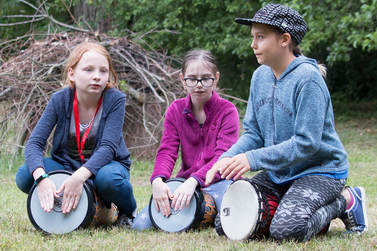 Babies and young children love to shake, rattle, and roll a variety of musical instruments and common household items. The “aha!” instant when a young child discovers the ability to manipulate objects to make sounds can be a joyful and momentous one. So rhythm instruments solve one perennial classroom problem: Ensuring an orderly environment conducive to learning while at the same time respecting young children’s innate need to make noise and enjoy movement. While learning the words to a new song can be challenging and involve a great deal of memorization, making music with rhythm and percussion instruments is so simple that it can be enjoyed by children with a wide range of abilities. For shy children, having a musical instrument in hand can increase their self-confidence as they join musical activities that demand only that they make noise. One study after another has shown that learning to make music supports the full range of intellectual, artistic, social, and emotional development in young children. Early education programs that make good use of rhythm and percussion instruments can be particularly helpful in strengthening spatial and kinesthetic awareness, as well as to develop young participants’ coordination. Some simple examples of percussion in the classroomYou can instruct children to shake their rhythm instruments alternately high, low, to the left, and to the right, in front of themselves and behind their backs. Children can make the big motions that reinforce gross muscle development while shaking their instruments, or small movements that build fine motor skills. Real-time verbal commentary (“Shake it to the left! Shake it to the right! Over! Under!”) adds another layer of language learning to the mix, while rhythm and music can help to anchor memories of new words in children’s consciousness. Young musicians can easily learn to adjust their movements, ranging from vigorous shaking to delicate jingling, as they learn more about the concepts of “loud” and “soft.” The history of drums reverberates to the present day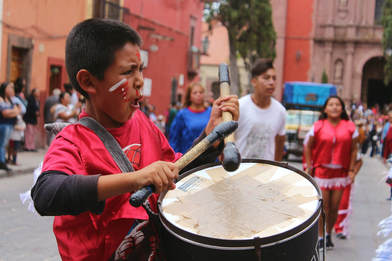 Civilizations throughout recorded history have made use of drums. Military maneuvers and marches have been accompanied by drum beats. Ancient tribes frequently used drums to broadcast signals and send messages back and forth. Many students of music history believe that the snare drum arose in medieval Europe, at a time when a wide range of drum types were used, although the ultimate origin of drums was likely in Asia. The Middle Ages also saw the extensive use of the timbrel, an early type of tambourine with jingling attachments, and of the frame drum or tympanum, whose body was a wooden frame with an open underside. Itinerant performers would often pair a timbrel with a pipe held in one hand. Medieval Europe also saw a proliferation of various types of drums, with no standard way of referring to them. “Tabor” or “tambour” was another term used to describe a drum, with various linguistic variations. The phrase “trommel” was a 12th century coinage from Germanic languages that linguists believe to be the source of the current English word, “drum.” In medieval Europe, the bass drum followed the snare drum into wide use, even as drum sticks evolved to the point where they were carved from a range of wood types. Beef wood was a popular drum stick material in the 18th century, while military bands of the following century favored ebony. The era of European colonization led to the adoption of bongos from African and Afro-Cuban populations into Western cultures in the 1800s, as well. The early 20th century witnessed the sale of entire sets of drums as a unit, with innovations adding cymbals and other percussion to the standard set. In the 1950s, Joe Calato introduced the nylon-tipped drum stick, and electric drums appeared for the first time in the 1970s. Homemade rhythm instruments can be all you needHomemade rhythm and percussion instruments can provide hours of fun. And they can be as simple as a small, sealed container filled with rice, beads, or other items that produce sound when shaken.
Other, more elaborate shakers can be made by using strong packing tape to attach two clear plastic cups together after filling them with percussive material. To add flair, you can attach shower curtain rings to either end of this type of shaker with more packing tape. Then you can attach ribbon to the rings to serve as colorful streamers. A discarded coffee can might become a drum, or unused window casings or wooden rectangles can be cut to various sizes and assembled as a xylophone. A garbage can is just waiting to become a steel drum, while a series of jars filled with water of varying depths can create cascading, delicate melodies when struck with a light mallet. For those who would rather purchase their instruments, a wealth of online shopping sites offer inexpensive, child-friendly egg-shaped shakers, rhythm sticks, whistles, small drums, tambourines, and more. Across the world, dedicated musicians have helped nurture the talents of new generations of young performers in the classical tradition through a variety of youth symphony orchestra experiences. These organizations, regardless of their location, share a set of common goals: to train young men and women in the rigors of musical interpretation while helping them develop vital life skills such as cooperation, self-discipline, goal-setting, and professionalism. Here are summaries of the histories and work of only a few of the world’s many youth orchestras active today: 1. The Children’s Orchestra SocietyIn 1962, Dr. Hiao-Tsiun Ma established the Children’s Orchestra Society (COS) as a means of teaching children to appreciate and perform music, and to understand the values of collaboration and teamwork. Since then, the New York-based nonprofit organization has transformed the lives of numerous young people by helping them gain skills in musicianship and performance that have had lasting positive effects on their lives. Thanks to the training COS offers, young musicians can perform at high levels as members of groups dedicated to classical and chamber music, and play alongside established adult performers. The COS continues to operate under the principles of its founder. Dr. Ma, a musicologist and teacher in his native China and in the West, was the father of world-renowned cellist Yo-Yo Ma and of Dr. Yeou-Cheng Ma, who currently heads the COS. The society’s child-centered philosophy aims to provide a supportive environment optimized for the unfolding of each student’s own innate musical gifts, with parts written specifically to enhance individual competencies. 2. The Los Angeles Youth OrchestraThe Los Angeles Youth Orchestra was founded in 1999. Originally funded with grant monies from the local Jewish Community Federation, the organization—then known as the Los Angeles Jewish Youth Orchestra—focused on Jewish-themed liturgical and other music. Its mission soon widened to include performance of the full range of music from the world’s musical heritage, both classical and contemporary. Under the leadership of composer and music director Russell Steinberg, who arranged several symphonies by Franz Joseph Haydn and created original compositions specifically for the group, its musicians’ talents blossomed. As its repertoire grew and diversified, so did the orchestra’s membership. By 2003, its performers included some five dozen students from a variety of backgrounds and representing about 50 Los Angeles-area high schools. In acknowledgement of this broader focus, that year Steinberg renamed the group the Los Angeles Youth Orchestra. In 2008, the group earned official nonprofit status. Since its debut, the LAYO has hosted West Coast and world premieres of a number of original compositions. Its schedule includes regular public performances, and it has planned a 2019 Argentina Tour, in which its members will perform four concerts in Buenos Aires, including an outreach concert in one of the city’s most poverty-stricken communities. 3. Chicago Youth Symphony OrchestrasThe Chicago Youth Symphony Orchestras has served the community as a nonprofit group providing music and performance education since 1946. Today, CYSO works with hundreds of young people from the primary grades through high school. These youth take part in a variety of ensembles including four full-scale orchestras, several string orchestras, jazz and steel orchestras, and chamber music groups. Prominent Chicagoland professional musicians serve as teachers and mentors to the youth as they train to present major performances. Former CYSO participants have gone on to distinguished careers in music and other fields. Many today perform in well-known orchestras and other ensembles around the world, while others have used the skills they learned with CYSO to become lawyers, physicians, and community leaders. Thanks to CYSO’s Community Partnership Programs, more than 8,000 young people have had the opportunity to gain musical training through neighborhood-based groups and through other venues over the course of the 2017-2018 season. These programs focus particularly on serving youth in under-resourced parts of the community, with the goal of making a strong music education a core part of the life of every Chicagoan. 4. The New York Youth SymphonyThe New York Youth Symphony was founded in 1963 to highlight the talents of young people ages 12 to 22. Today, after winning numerous awards and earning praise as one of the most prestigious of the world’s youth orchestras, the symphony continues its program of preparing young people for careers in music, and for becoming lifelong students of—and advocates for—the art. Over the half-century and more of its existence, the New York Youth Symphony has benefited from the guidance of world-renowned music directors. It has also served as the training ground for some of today’s most in-demand composers and performers, and has for almost 35 years actively commissioned new compositions from young musicians themselves. 5. The Recycled Orchestra of CateuraIn Paraguay, young people with few material resources have established themselves as a remarkable orchestra playing exquisite music on instruments made from garbage. The 2016 documentary film Landfill Harmonic takes viewers inside the creation of this extraordinary youth orchestra, founded by renowned maestro Luis Szaran and led by music director Favio Chavez for the benefit of the children living in the slum of Cateura, Paraguay. The orchestra has thrived thanks to the dedication of Szaran, Chavez, and a local recycler whose family has sustained itself by collecting and recycling trash. Now, the area’s youth have become skilled musicians playing violins, double bass, wind instruments, and more, all made from scrap metal, old barrels, discarded spoons and buttons, and other trash. And Szaran’s organization, Sonidos de la Tierra, or “Sounds of the Earth,” continues as an instrument workshop and worldwide musical touring ensemble supporting the orchestra. |
Photo used under Creative Commons from Marina K Caprara
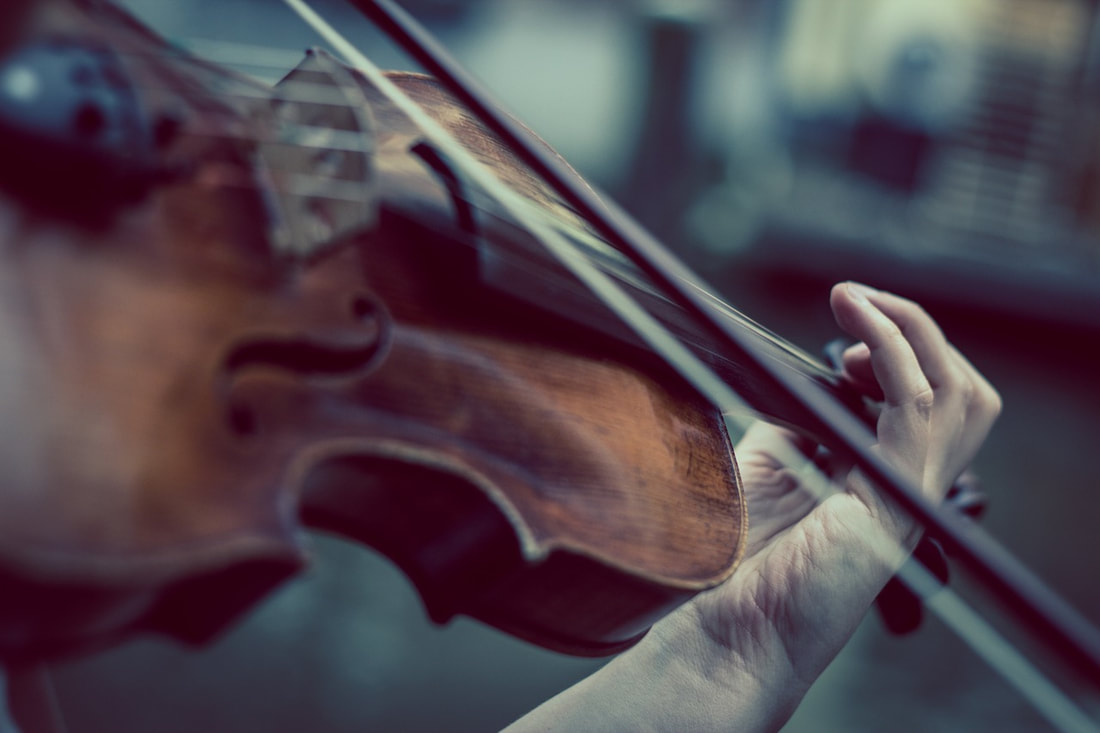
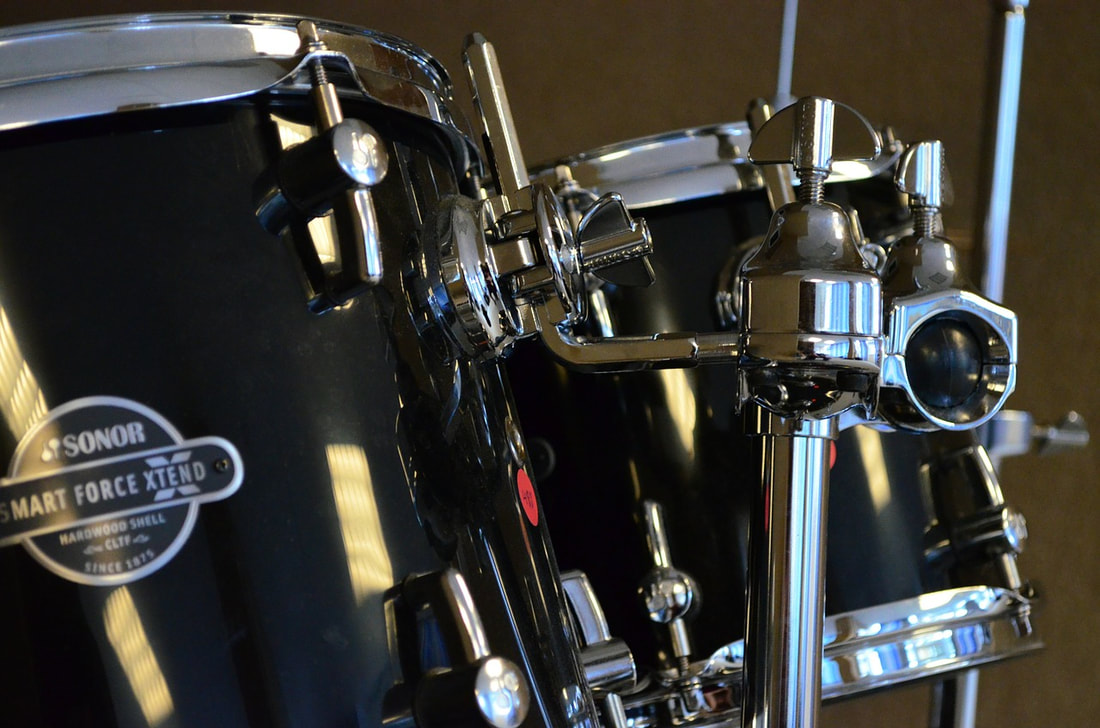
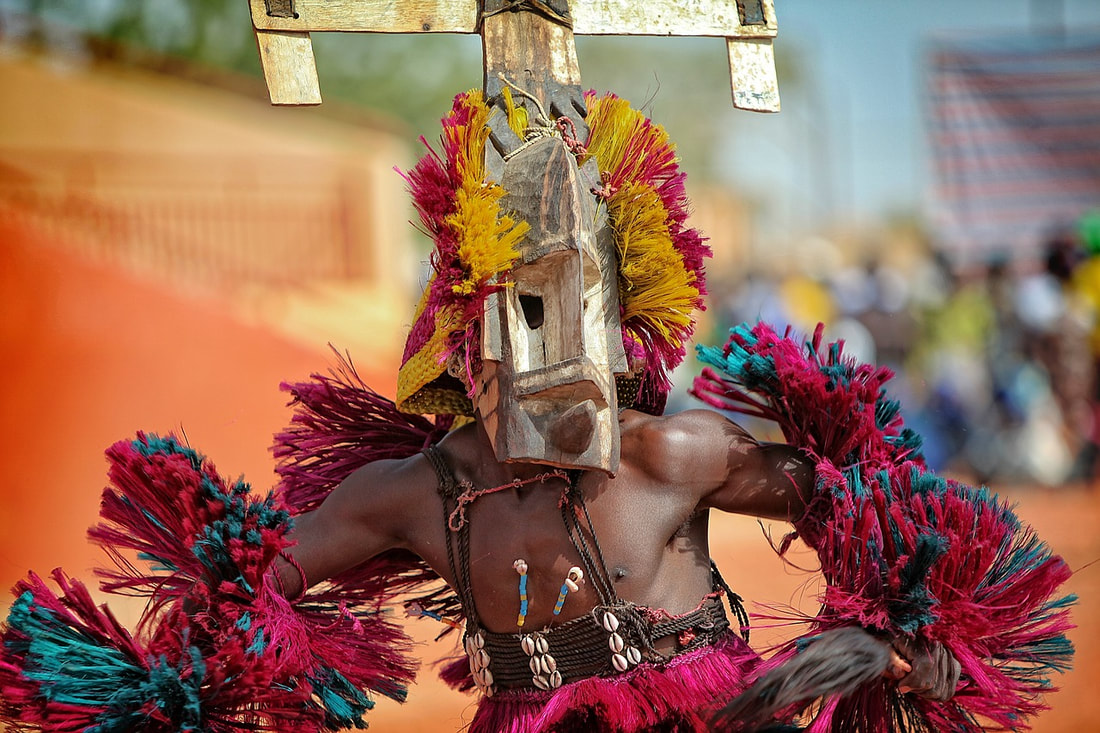
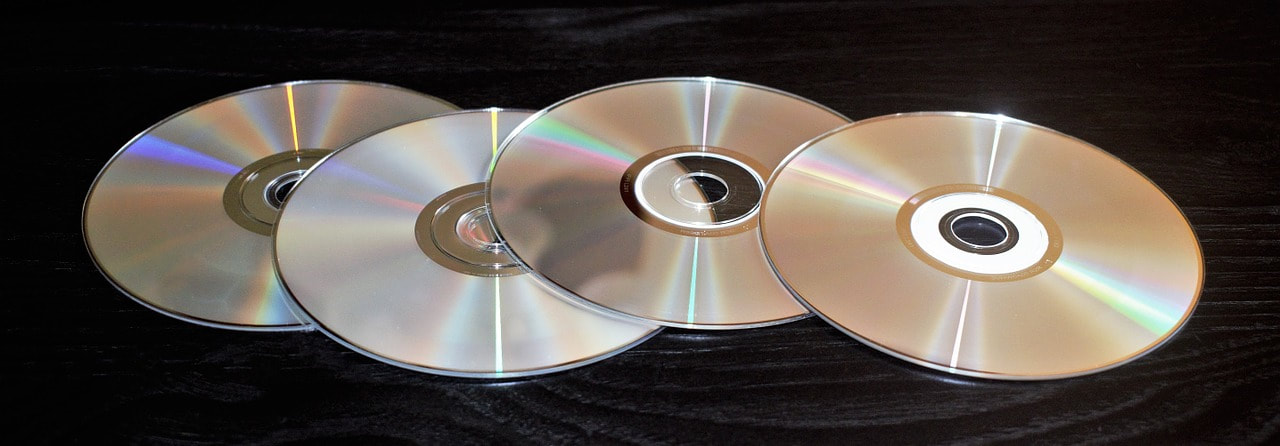
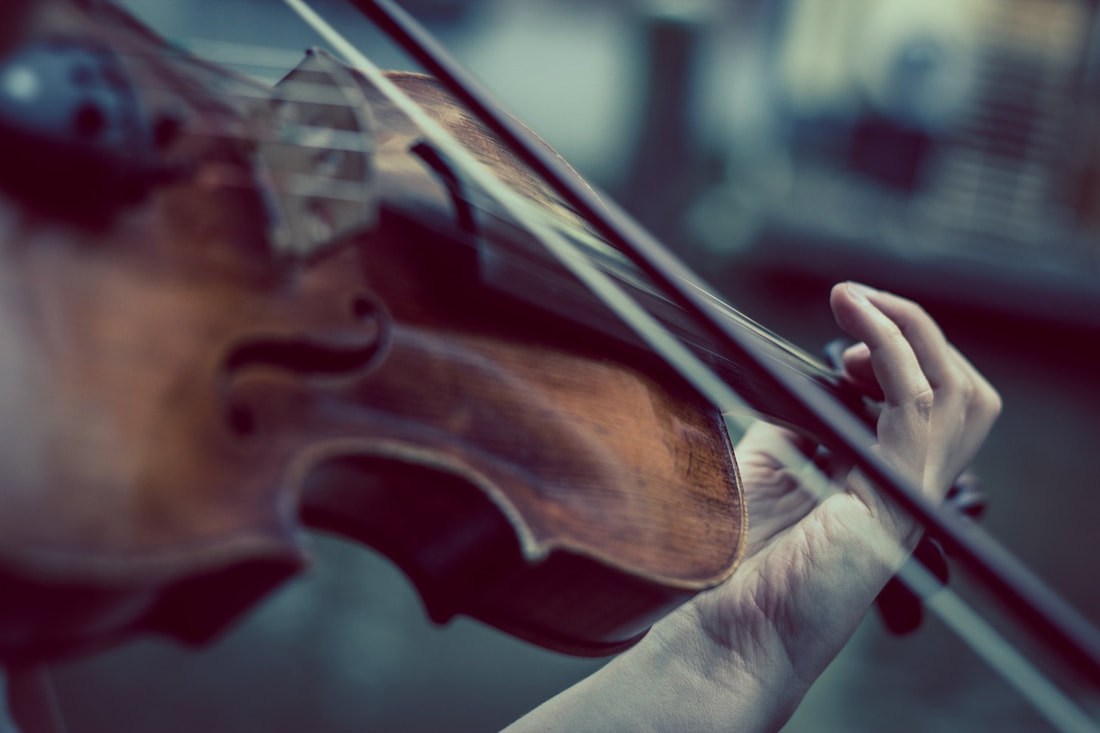
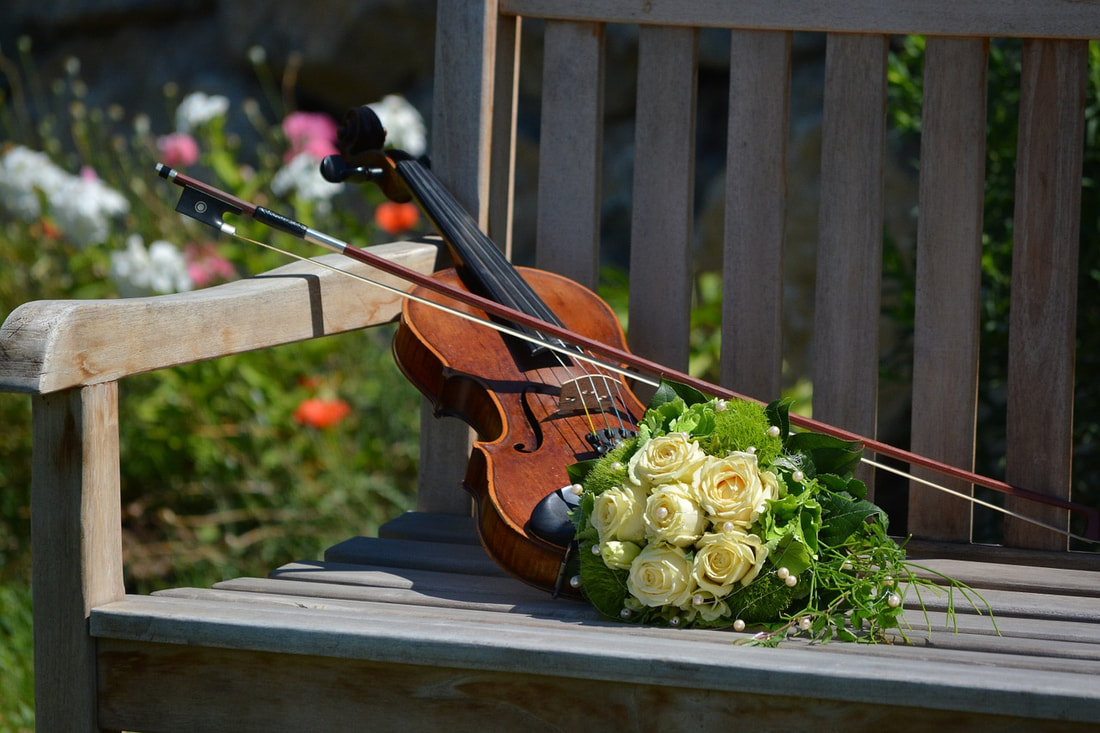
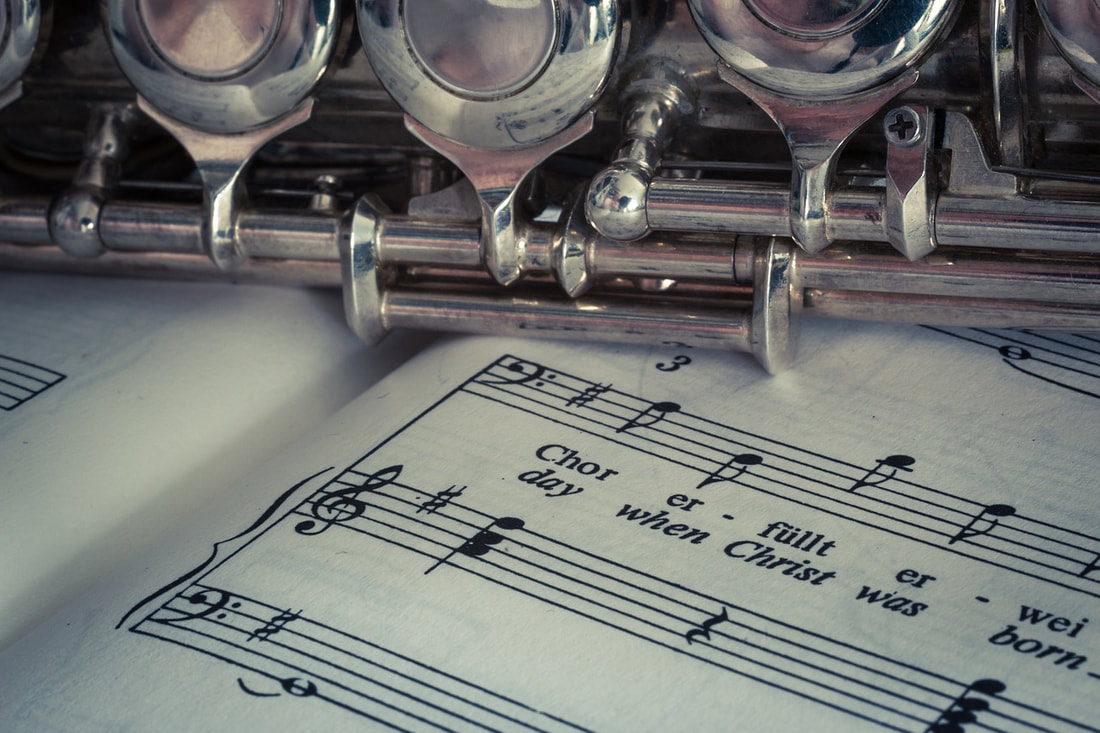
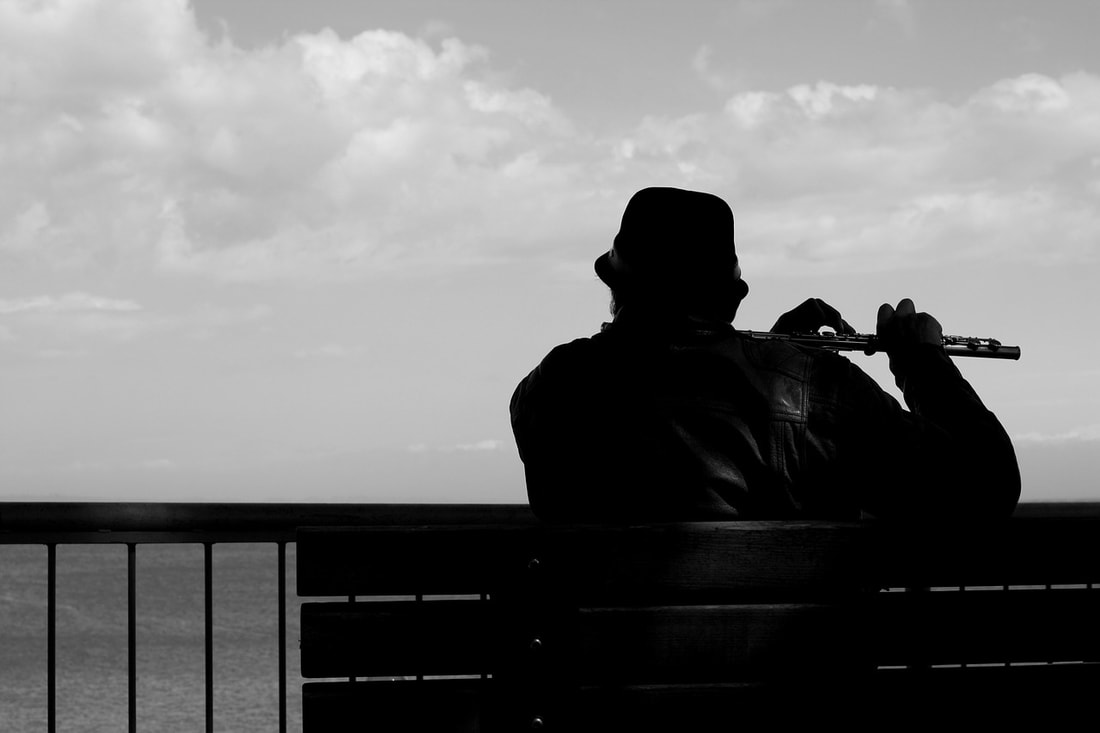
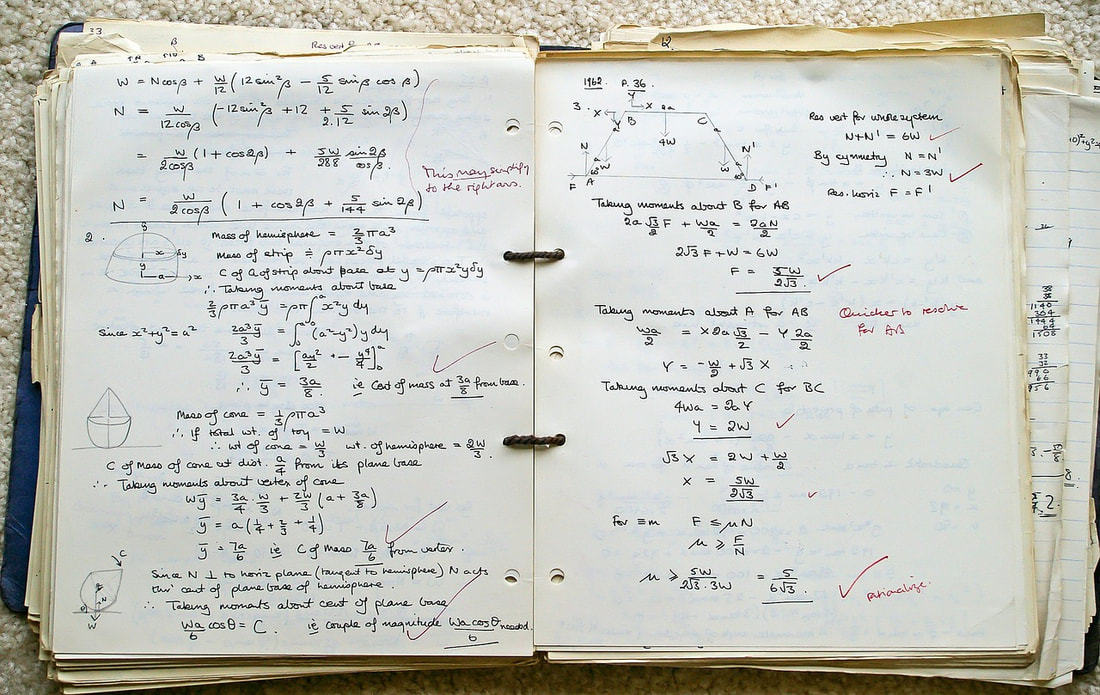
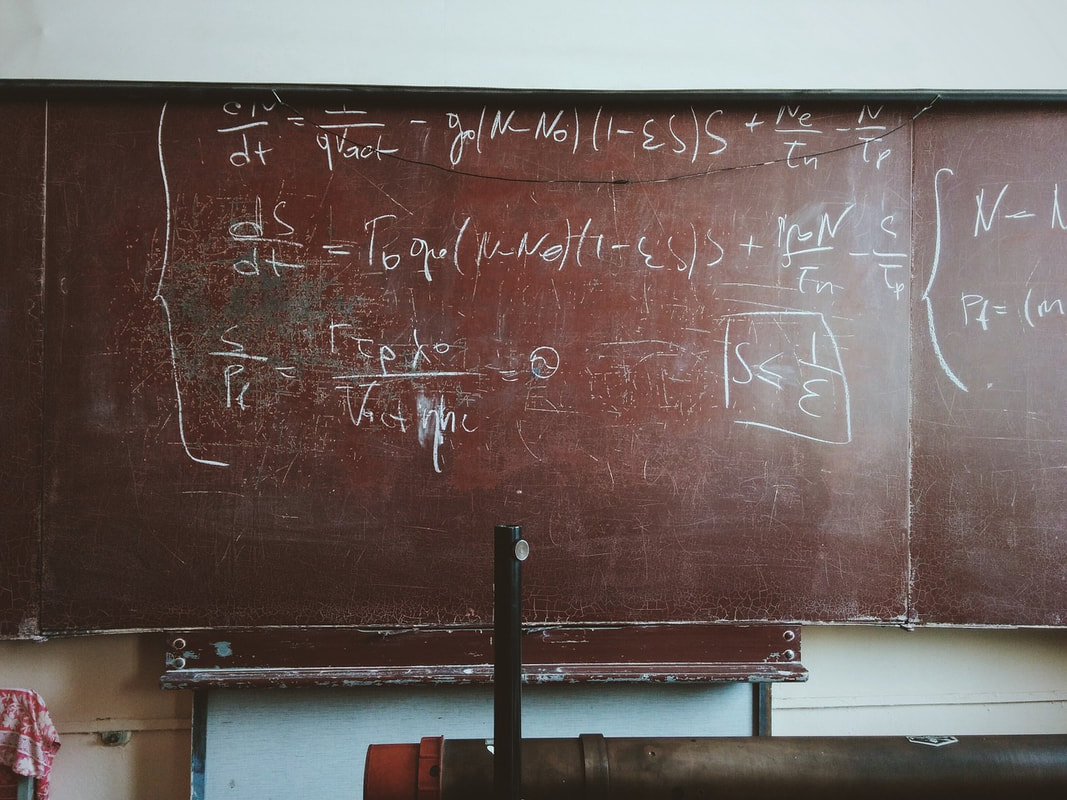
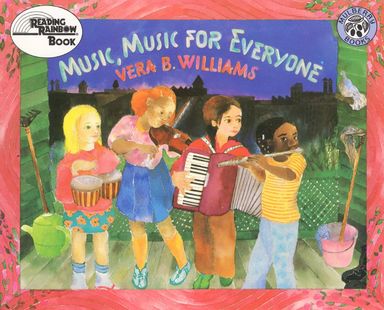
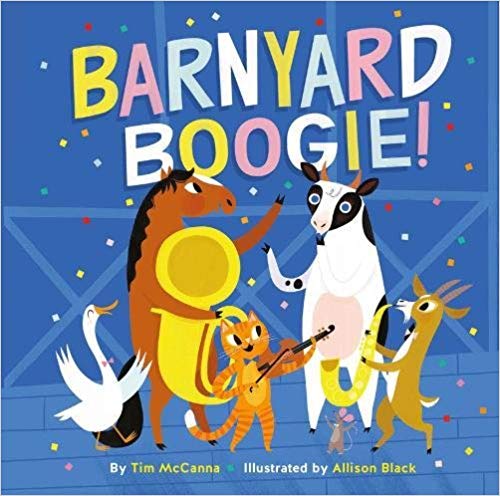
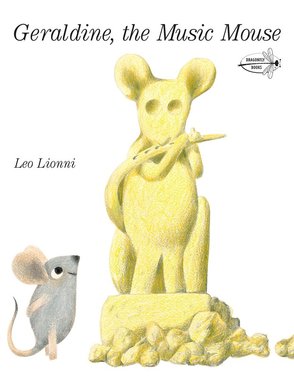
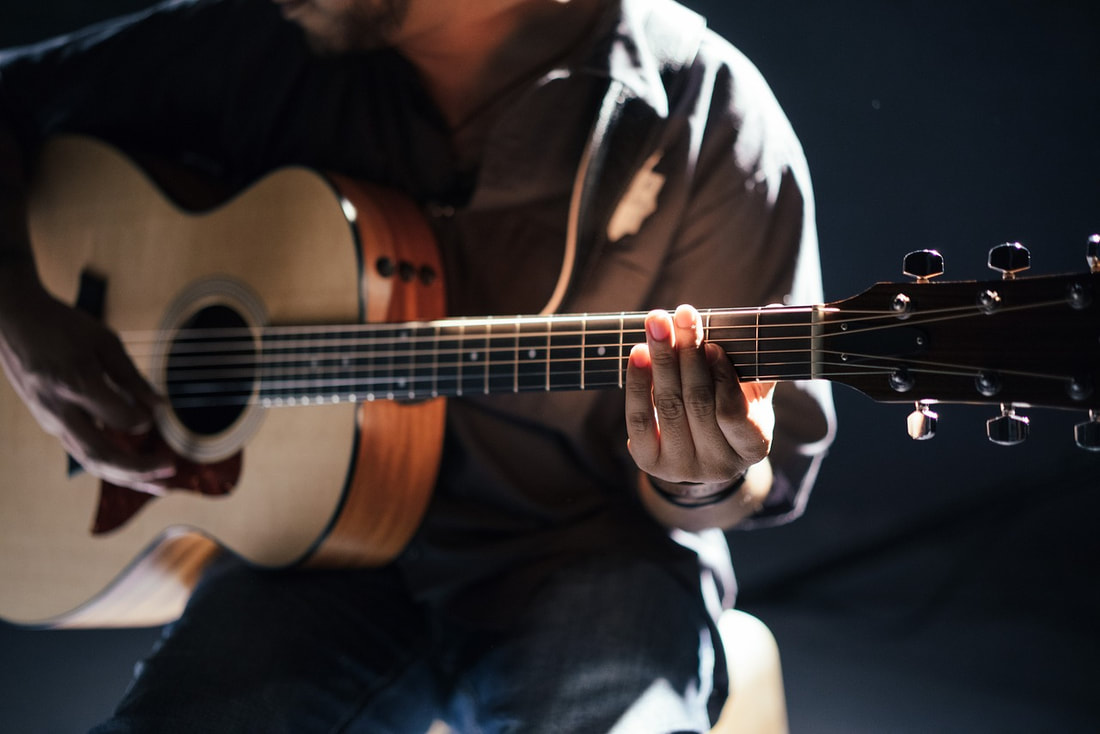
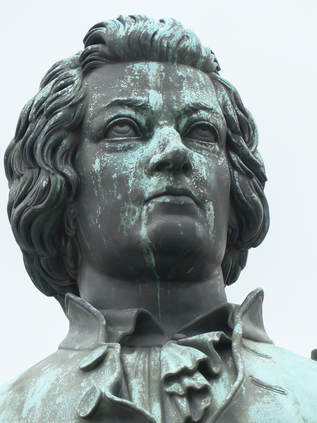
 RSS Feed
RSS Feed
